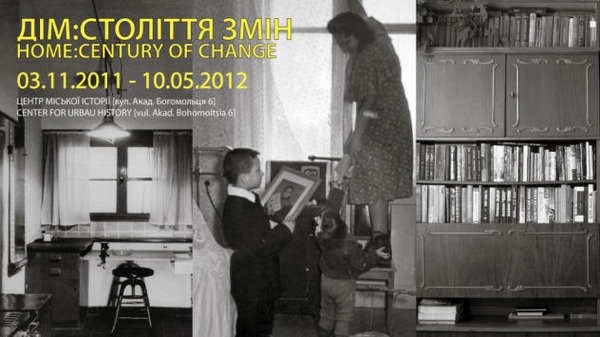Home: A Century of Change
dal 1/11/2011 al 9/5/2012
Segnalato da
Maribel Koniger - Erste Stiftung Communications
1/11/2011
Home: A Century of Change
Center for Urban History, Lviv
A major new exhibition which explores the history of dwelling in its cultural and social dimensions, as well as in its political and ideological contexts throughout the 20th century. The show examines the home as a multi-faceted place, which contains complex political, ideological, national, cultural, and gender histories, within the context of East Central Europe. While the global and regional contexts are incorporated, the focuses is on the case of Lviv.

In November 2011 the Center for Urban History of East Central Europe opens a major
new exhibition “Home: A Century of Change.” This exhibition explores the history of
the dwelling in its cultural and social dimensions, as well as in its political and ideological
contexts throughout the twentieth century. The exhibition examines the home as a
multi-faceted place, which contains complex political, ideological, national, cultural, and
gender histories, within the context of East Central Europe. While the global and
regional contexts will be incorporated, our exhibition focuses on the case of Lviv, which
offers an excellent opportunity to study the re-making and transformation of "home" in
the 20th century.
Why would the culture of the dwelling be an important theme for an exhibition? Usually,
we consider a person’s home to be his/her personal space, which belongs only to
him/her and is of concern only to him/her. Yet we can also look at the home as, first and
foremost, a private model of society, which can tell us a great deal about the outside
world and, in particular, the ceaseless interaction of the private and the public, the
personal and the social, the self and the other. With this exhibition we would like to ask a
very general question: “What is Home?” Home is a place in which we live and a space in
which we play out our personal, intimate, and emotional life, our memory, and our
identity. We will search for answers by looking at the specific case of the city of Lviv in
the context of East Central Europe.
The format of the exhibition is conceived to combine a story-telling narrative with
different multimedia applications. The exhibition space is subdivided into two main areas
with specific content and visual focuses. In these areas, relevant texts and images will
help the visitor understand the most meaningful socio-cultural, political, ideological,
economic, and technological factors which affected and changed our way of living in the
twentieth century:
In Area 1 the main task is to show the general development of historical perceptions and
practices of the home in the twentieth century. We show how ideologies, modernization
projects, the state, war, technology, and social inequality affected people’s way of living
and how the idea of “home” was embodied in the social and political projects of the
twentieth century.
Area 2 is divided into four conventional/functional zones associated with “home”: living
room, kitchen, bathroom, bedroom. In these four zones we introduce a main (but not
exclusive) issue exploring each through the 20th century using documented cases from
Lviv
An exhibition should not only tell a unique story, but should also serve as a hub for
activity and communication. Therefore there is an educational
program with Round tables and presentations, a series of film-seminars, lectures and a children program.
Photo credits:
Universität für Angewandte Kunst (University of Applied Arts)
Central State Cinema, Photo, and Phono Archive of Ukraine
Center for Urban History of East Central Europe
Press contact:
Maribel Königer maribel.koeniger@erstestiftung.org +43 (0)50 100-15453
Exhibition Hall, Center for Urban History
Bohomoltsia Street, 6, Lviv, Ukraine
Open: Wed–Sun 11 am - 5:30 pm
Admission is free.



